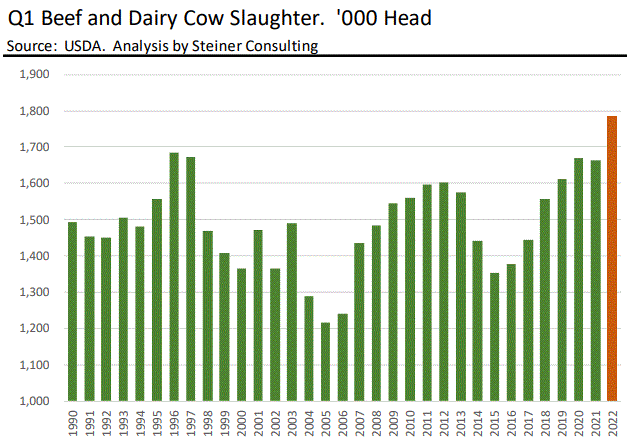Beef cow slaughter has been unprecedented so far this year and this will have significant implications for beef supplies in the coming years. Beef cow slaughter in Q1 was 959k head, 17% higher than last year’s already high slaughter.
Drought conditions and high cost of supplemental feed, factors driving slaughter this year, continue to persist. Some areas have received much needed rains recently but more is needed. The cow sent to market are not coming back.
The question is whether producers will see good enough pasture conditions this spring and summer to hold on to their remaining stock. If pasture conditions improve, we could see a significant shortfall in beef cow slaughter in Q2 and Q3. Lean beef prices have been held in check so far by the increase in cow slaughter as well as the increase in imports. Ground beef demand should be stout in May and June and combined with a lower cow slaughter this could prove explosive for lean beef values.
If pasture conditions are similar to what we saw last year, then the hole in the beef cow herd will only get bigger. USDA is currently forecasting this year’s calf crop to decline 2.2% from the previous year. Even that aggressively bullish calf crop number may prove too optimistic if current conditions persist. Beef price inflation has accelerated in the last two years. With significantly fewer cows in the country and fewer calves in the pipeline, beef supply will only get tighter in the coming years.
Daily Livestock Report: Read Complete Report














